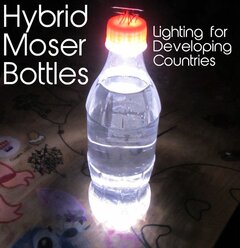Green storage for green energy
Published, Sept. 24, 2015
Cambridge, Mass. – September 24, 2015 – A team of Harvard scientists and engineers has demonstrated a new
"Flow battery", a rechargeable battery that could make storage of electricity from intermittent energy sources like solar and wind safe and cost-effective for both residential and commercial use.
At the heart of flow batteries is a sandwich of electrodes, known as a stack, separated by an ion-conducting membrane. The electrolytes are pumped through the stack during charging and discharging. In most designs, when the battery is discharged to provide power, a positively charged electrode strips electrons from molecules in one electrolyte and sends them through a circuit to charge-accepting molecules in the second electrolyte. This process produces positively charged ions in the first electrolyte that travel through the membrane into the second electrolyte, where they balance the charges coming in from the electrons. When the battery is charged, the flow of electrolytes, electrons, and ions is reversed and electrons are dumped into the first electrolyte.
The alkaline flow battery used organic compounds called quinones as the electron-storing components of one of its two electrolytes. Quinones are abundant, naturally occurring chemicals that are integral to biological processes like photosynthesis and cellular respiration. While quinones in aqueous solution formed the negative electrolyte side of the battery, the positive side relied on a non-toxic and non-corrosive ion called ferrocyanide. All told, the battery contains only compounds made from inexpensive elements (carbon, oxygen, nitrogen, hydrogen, iron and potassium) dissolved in water. The researchers point out that because the
quinone-ferricyanide battery liquids are not corrosive, they could save money on battery materials for tanks or casings, because it now becomes within the realm of possibility to use inexpensive plastics.
Battery experts see its merit. “It’s scalable, it’s inherently safe” and potentially cheap, They expect it could be
commercialized soon, within a decade, but it still needs more testing.
To see how a flow battery works, see the video below.
https://youtu.be/4ob3_8QjmR0
... ang tanong... ma-commercialized kaya ito?... sundan ang susunod na kabanata...
Sources:
http://www.forbes.com/sites/carmend...eslas-powerwall-for-storing-renewable-energy/
http://www.seas.harvard.edu/news/2015/09/green-storage-for-green-energy
http://news.sciencemag.org/chemistry/2015/09/cleaner-greener-way-store-solar-and-wind-energy
http://news.nationalgeographic.com/...uld-charge-solar-homes/#.VgS-rTHlFLw.facebook
- - - Updated - - -
Noong July 2015, sa
Intersolar North America Solar Conference, hindi lang pala Tesla Powerwall ang nag display ng Solar Batteries na soon to be commercialized na... eto yung iba pa...
A Tesla Powerwall on display at Intersolar 2015.
A battery system from OutBack Power shown off at Intersolar 2015.
Photo courtesy of Katie Fehrenbacher, Fortune.
The CEO of Sonnenbatterie, Boris Von Bormann, stands in front of the company’s new battery for homes in North America at Intersolar 2015.
Photo courtesy of Katie Fehrenbacher, Fortune.
... personally, mas gusto ko yung design ng OutBack Power... parang mas madali i-DIY...







